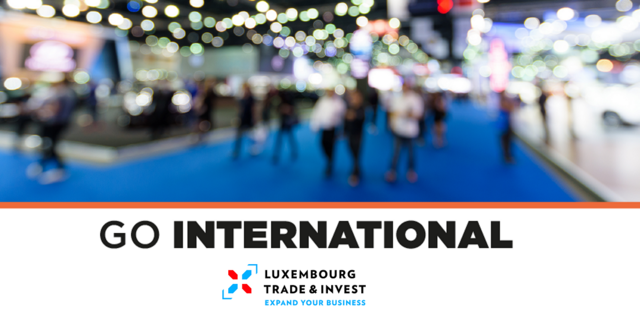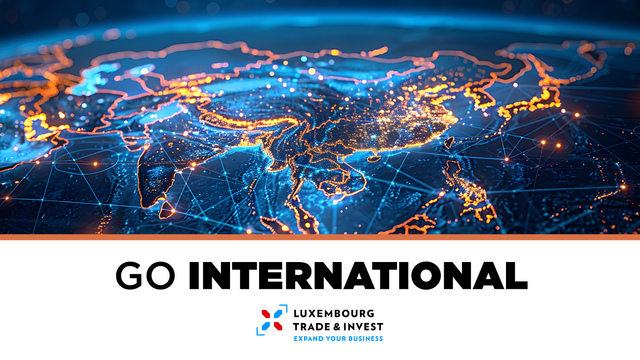
PwC Luxembourg is proud to announce the publication of its report: “Banking Trends and Figures 2024 GenAI: The new face of banking disruption” Many facets of GenAI (challenges and opportunities) were discussed at the dedicated PwC Luxembourg Banking Day on 30 September 2024, which had as its theme – GenAI as a catalyst for reinvention! The event was a resounding success – testimony to the keen interest in this topic – and was hosted by Julie Batsch, PwC Banking and Capital Markets Leader and Patrice Witz, PwC Technology Partner, and Digital Leader at Mudam in Luxembourg-Kirchberg.

The banking sector, no stranger to disruption, has had to navigate several waves of innovation from fintech startups, evolving customer expectations, and rapid technological advancements. Now, as the sector stands on the brink of a new era, GenAI emerges as its new face of disruption. While some banks are far advanced in their digital transformation strategies—integrating AI and other technologies into their core operations over the years—others are still racing to achieve this. This new wave of disruption, led by GenAI, promises to reshape the banking sector yet again, offering institutions the opportunity to embrace innovation and stay at the forefront of the industry.
By the end of this decade, bank potential spending on GenAI is estimated to reach USD 85.7 billion, up from a forecasted USD 5.6 billion in 2024. As a sector driven by knowledge and technology, this exponential investment flowing into GenAI highlights new priorities and the scope of influence GenAI holds across the banking industry. It reflects an accelerated transition from legacy systems and the growing recognition of AI and GenAI’s transformative potential in the financial sector.
The aim of this year’s “Banking Trends and Figures 2024 GenAI: The new face of banking disruption” was to capture the potential of GenAI to enhance cost efficiency. drive innovation, enhance employee and customer experience, and bolster security measures. As the banking sector grows more complex, PwC believes that GenAI will stand out as a critical tool for optimising operations and meeting the evolving expectations of customers through personalised and predictive services.
Additionally, its sophisticated algorithms can strengthen security by detecting and responding to cyber threats in real time, providing robust protection against fraud and other security breaches. However, realising the full potential of GenAI in Luxembourg’s banking sector requires navigating a complex array of challenges.
In addition to a fragmented regulatory landscape, evolving employee expectations, and the transition from legacy systems, banks must also prioritise addressing critical concerns around data protection, security, and the growing risk of malicious use by increasingly sophisticated cybercriminals. The need for upskilling employees to effectively work with GenAI also cannot be underestimated. These factors not only create opportunities for GenAI integration but also highlight the importance of robust governance frameworks to ensure that these risks are proactively managed.
To address these challenges, PwC Luxembourg recommends some key steps (in more detail in the report) that are necessary for the GenAI adoption journey for banks in Luxembourg:
- Establish responsible AI policies and a secure environment to build a foundation of trust;
- Define an AI strategy to prioritise high-value use cases;
- Build initial use cases by identifying patterns that can scale;
- Review and refine AI governance and implementation to continuously align with evolving regulatory standards.
Throughout the report, the underlying thread is that AI/GenAI will be best used when augmenting human capacity rather than attempting to replace it. It relies on skilled personnel to deliver its true value, and this means that a critical part of the strategic pathway to adopting GenAI in the banking industry involves upskilling the workforce as to the technology right up to Board level.
Additionally, amidst the increased automation brought on by GenAI, maintaining a human touch is essential for building and preserving customer trust. Banks should therefore strike a balance between leveraging GenAI for efficiency gains while ensuring that the element of human interactions remain present.
Julie Batsch, Audit Partner, Banking and Capital Markets Leader, PwC Luxembourg said: “As GenAI will continue to reshape the banking industry, we believe that those who act decisively and responsibly will be in a leading position in an increasingly competitive AI-driven future. These forward-thinking banks will position themselves to capitalise on new opportunities beyond just achieving operational efficiencies. By proactively addressing the key forces shaping GenAI’s adoption, they will not only navigate the complexities of GenAI integration but also set new standards for innovation and leadership within the banking industry in Luxembourg.”
Patrice Witz, Advisory Partner, Technology Partner and Digital Leader, PwC Luxembourg said: “As the new face of disruption, GenAI is a catalyst for innovation and efficiency in the banking industry. The technology is not confined to specific business functions; rather, it permeates the entire value chain of any bank. However, the path to successful adoption requires careful navigation of the forces shaping the industry, from a fragmented regulatory landscape to data quality and privacy issues.”
PwC Luxembourg Banking Day – GenAI as a catalyst for reinvention!
Through the analysis of GenAI use cases and leveraging valuable insights from industry leaders during PwC’s recent PwC Banking Day event, the first part of the report presents an in-depth picture of how this technology can help achieve significant gains in the increasingly competitive banking sector.
This year, at what has become a flagship event in Luxembourg, discussion focussed on how banks can make the most out of GenAI exploring together the future of banking through the lens of GenAI and discussing how this cutting-edge technology can support the market players to enhance cost efficiency, reinvent business models and drive innovation.
Mr. Gilles Roth, Minister of Finance highlighted several points at EU and Luxembourg-level, noting that
the banking sector has been able adapt to challenges in recent years, keeping it as the cornerstone of the Luxembourg economy. Significantly he also stated that AI/GenAI could be the tool (s) used to boost competitiveness-as competitiveness was one of the key aspects covered by the Minister at the event. Mr Roth ended by noting the importance of dialogue between the Government and the private sector. While the banking sector requires its leaders to ensure a successful future, the Government would continue to foster an environment where the financial sector can develop and remain sustainable and competitive.
This was followed by keynote speaker, Patrice Amann, Microsoft EMEA Financial Services Leader who focused on three core topics: (i) recent trends in the global economy and its impact on AI, (ii) the changes in AI and introduction of GenAI, and (iii) the vision for GenAI. Patrice then emphasised that AI is not new, but its capabilities have augmented due to GenAI. Hence, at Microsoft they refer to “augmented intelligence”, as opposed to the “artificial intelligence”. He concluded by noting that employees should not fear being displaced by AI, but rather be aware that they will be challenged by people who can effectively use GenAI.
Patrice Witz moderated a panel discussion with Ananda Kautz, Paul Sweeney, and Anne Goujon with a focus on the impact of digitalisation and GenAI on the banking industry. In relation to the areas where digitalisation has had the biggest impact, panellists agreed that the client has seen the biggest impact, highlighted by the level of services provided via banking apps, ranging from accessing accounts, to digitally signing documents, or performing mobile payments. Other areas where digitalisation has had an impact include improvements in operational efficiency and new CRM solutions. The panellists agreed that GenAI will be used as a tool set augmenting experts rather than replacing them. As such, while in 3-5 years’ time panellists expect the industry to have AI-imbedded solutions such as virtual assistants, AI will remain a factor that only “augments”, and highlighted the critical role that will be played by experts and staff, who are the ones that, feed the AI tool and play a critical role in the customer engagement pieces, respectively.
Other highlights included keynote speaker Elin Hauge, professional speaker and AI strategist, addressing the critical need for businesses to understand the mathematics and data behind AI to effectively harness its potential and mitigate challenges such as sustainability issues and data bias. Elin emphasized that GenAi is based on mathematics rather than magic, and highlighted the importance for the entire organization, including the Board, to enhance their understanding of the technology quickly in order to effectively engage with and evaluate it.
Simon Gorbutt, Deputy CEO - Luxembourg for Finance, highlighted Luxembourg's resilient financial sector and the imperative of integrating AI to maintain competitiveness, while also managing cyber-attack risks and evolving client demands. Claude Marx, General Director CSSF represented that body’s view as he discussed EU regulatory updates, the importance of governance in AI, and the necessity of collaboration between public and private sectors to address greenwashing and enhance investment within the EU.
The discussions throughout the day brought the topics to life. The stakes are high, and the pace of change brought by GenAI is relentless. Banks that act decisively and responsibly will secure their place at the forefront of this technological evolution and will also set new standards for innovation and excellence in the financial industry. We trust that this report will provide valuable perspectives and actionable recommendations as you explore the exciting and challenging landscape of GenAI. The future of banking is being shaped today, and with the right strategies, Luxembourg’s banking sector can harness the power of GenAI to achieve significant success.
Luxembourg's banking sector evolution
As always, the second part of the report provides an analysis of the financial statements of the largest segments of banks present in Luxembourg. This year, we shift our focus from examining the evolution of banks within specific country segments to providing a consolidated year-on-year snapshot of all banks in Luxembourg, highlighting key financial metrics.
*Key takeaways – Overview of the Luxembourg banking sector’s evolution
- With 119 authorised banks at the end of the financial year 2023, the number of banks decreased by two entities as compared to 31 December 2022.
- Regarding the legal status, 74 banks are under Luxembourg law, 32 are branches of banks from EU Member States and 13 are branches of banks from non-EU Member States.
- In terms of geographical representation in the Luxembourg financial centre, German banks still make up the largest group at 12.6%, followed by Chinese banks registering at 11.8% share, Luxembourgish banks, Swiss banks and North American banks all registering at 10.1% share.
* Source: CSSF Annual Report 2023
Download the report



